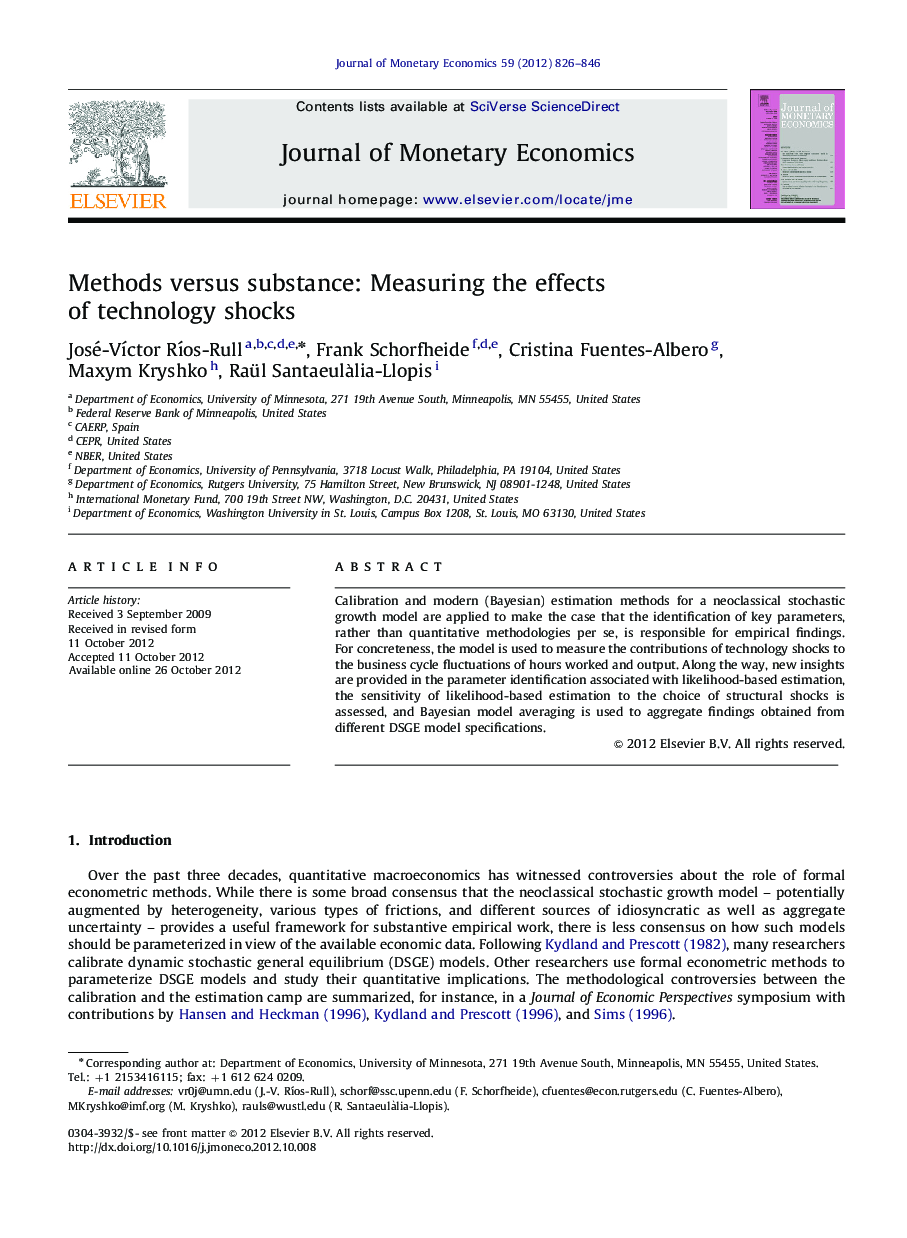| Article ID | Journal | Published Year | Pages | File Type |
|---|---|---|---|---|
| 967178 | Journal of Monetary Economics | 2012 | 21 Pages |
Calibration and modern (Bayesian) estimation methods for a neoclassical stochastic growth model are applied to make the case that the identification of key parameters, rather than quantitative methodologies per se, is responsible for empirical findings. For concreteness, the model is used to measure the contributions of technology shocks to the business cycle fluctuations of hours worked and output. Along the way, new insights are provided in the parameter identification associated with likelihood-based estimation, the sensitivity of likelihood-based estimation to the choice of structural shocks is assessed, and Bayesian model averaging is used to aggregate findings obtained from different DSGE model specifications.
► We compare and contrast DSGE model parameter identification in calibration versus (Bayesian) estimation methods. ► The sensitivity of likelihood-based estimation to the choice of structural shocks is assessed. ► In an empirical application the contribution of technology shocks to business cycles is measured. We find that it is small.
